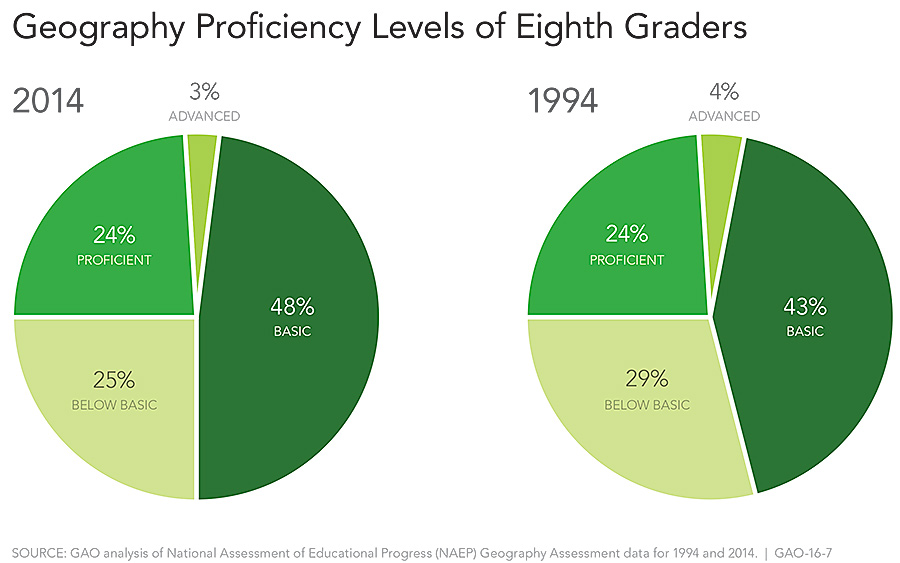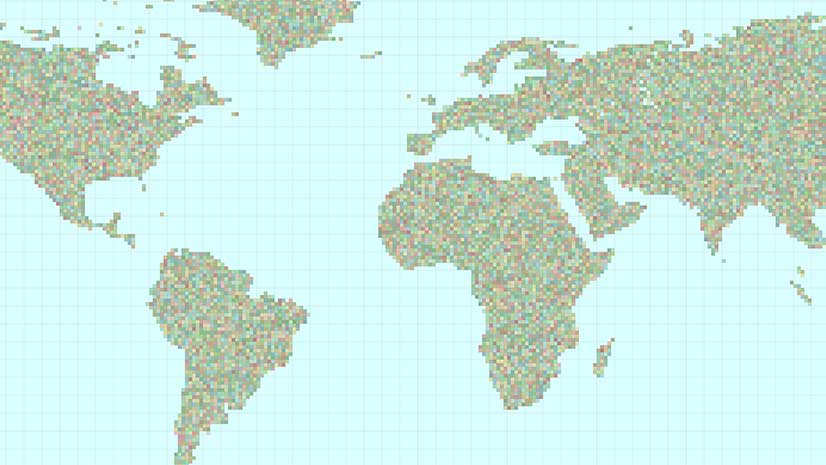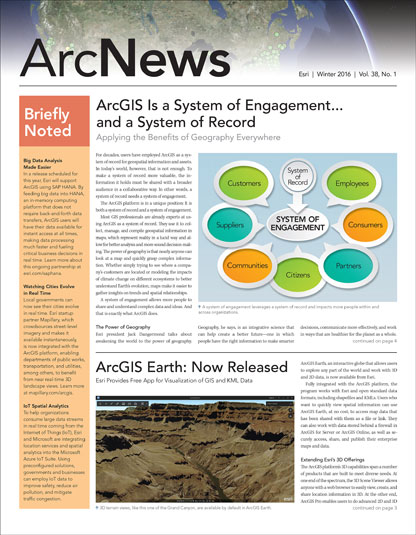Singer and songwriter Sam Cooke was right, and now it’s official: K–12 students in the United States really don’t know much about geography, according to a major report recently released by the US Government Accountability Office (GAO).
The congressionally mandated study found that nearly three-quarters of eighth graders in the United States are “not proficient” in geography and that the proficiency levels of American students have shown no improvement since 1994.
This is a clarion call for the need to support geography education in the United States.
Knowledge of Geography Is Crucial
In 2013, a Senate report from the Appropriations Committee expressed concern about Americans’ preparedness for pursuing careers in skilled fields, especially in geospatial technologies.
“The Committee recognizes that a sound understanding of geography is critical to ensuring that the American workforce is qualified for jobs in geospatial technologies and other emerging industries,” states Senate Report 113-71.
The GAO study, which was conducted pursuant to this report, makes it clear that geography is indeed integral to nearly all aspects of life today, from the economy to foreign policy. It also shows that employment of specialists in geography, or geographers, is expected to grow by 29 percent from 2012 to 2022, according to a US Department of Labor projection. That is much faster than the average growth for all occupations, which is 11 percent.

“Geographic information and geospatial, or location-based, technologies are growing sectors of the American economy, influencing almost every facet of modern life, from tracking lost cell phones to monitoring disease outbreaks like Ebola,” affirms the study’s cover letter to US senators Roy Blunt and Patty Murray. “The emergence of these technologies has increased demand for workers who can analyze and interpret geographic information. Research suggests that K–12 education is critically important for learning the fundamentals of geography, which is the study of places and the relationship between people and their environment.”
But only 27 percent of eighth grade students are proficient in geography, with just 3 percent of them in the advanced category. Meanwhile, 48 percent of eighth graders have just a basic understanding of the subject, while 25 percent scored below proficient.
More Investment in Geography Education
The GAO study specifically noted that the lack of adequate funding designated for geography-focused programs in national education legislation has hindered US Department of Education officials in their ability to support geography education.

This reinforces the recommendations of the American Association of Geographers’ (AAG) Resolution Supporting K–12 Geography Education, which calls on Congress to include funding for K–12 geography as part of the reauthorization of the Elementary and Secondary Education Act (ESEA), otherwise known as No Child Left Behind. The AAG’s resolution has already been endorsed by a number of former US secretaries of state and defense, 24 bipartisan incumbent governors, and more than 25 Fortune 500 companies.
The GAO report’s findings also underscore the critical importance of Esri’s far-reaching donation of ArcGIS Online to all K–12 schools in the United States via the Department of Education’s ConnectED program. This extraordinary philanthropic action opens up broad new opportunities to bring GIS and underlying geographic concepts into US schools right now. And with the joint AAG-Esri GeoMentors program, Esri’s talented and extensive user community can also play a direct role in improving geography and GIS education in the US by supporting teachers as they introduce ArcGIS Online and geography into their schools. (Learn more and volunteer as a GeoMentor.)
Wider Recognition of the Need for Geography
While the lack of progress in improving K–12 geography education has been frustrating, it is clear that the need to change this is now becoming more widely recognized—within both governmental and educational circles and, perhaps most significantly, in society and the business world.
Efforts from Esri, AAG, and many others, are making real headway, and the GAO report adds to the rationale for campaigning for fundamental change. Together, we can make this change happen.
A copy of the full GAO report is available here. Please direct questions about the report to Jacqueline M. Nowickiat (617) 788-0580.
Contact Doug Richardson at drichardson@aag.org.
Read other articles in the “Crossing Borders” series.


